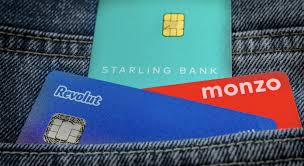When we talk about tech giants, the U.S. usually dominates the conversation—from Silicon Valley’s grip on AI to the sprawling influence of consumer apps like Amazon and Google.
But in at least one area of financial technology, the tables have turned.
Europe has taken the lead in digital banking, specifically in the rise of neobanks—a space where sleek design, smart regulation, and a head start have combined to give European startups a clear edge.
Neobanks Explained: Digital-Only and Here to Stay
So what exactly are neobanks? They’re online-only banks that don’t rely on brick-and-mortar branches.
Many of them emerged in the aftermath of the 2008 financial crisis, as public trust in traditional banks took a hit.
Companies like Monzo, Revolut, Starling Bank, and N26 began popping up around 2015, offering intuitive apps and a customer experience that felt more like using Spotify than filling out forms at your local bank.
Today, the global neobank market is worth around $230 billion, with predictions it could hit $4 trillion by 2034.
That massive jump reflects not just the demand for digital-first experiences, but also the fact that these banks are built to scale globally.
When Fragmentation Becomes a Fintech Advantage
You might assume that the U.S.—with its single regulatory system—would have the upper hand when it comes to launching banks.
But in this case, Europe’s patchwork of national regulators actually works in fintech’s favor.
Countries like the UK, Germany, France, and the Netherlands have created supportive ecosystems for startups.
Through things like phased licensing and regulatory sandboxes, these nations have made it easier for new digital banks to test and launch their products.
And once a neobank secures a license in one EU country, it can operate across all 27 member states through a process known as “passporting.”
Compare that to the U.S., where only a handful of new banking licenses are granted each year.
Getting licensed means navigating multiple state and federal layers, and most neobanks end up partnering with sponsor banks—an arrangement that’s both fragile and limiting.
Traditional Banks in Europe Are Slower to React
One big reason European neobanks have taken off is that their traditional competitors are slower to evolve.
Many legacy European banks have been hesitant to invest in tech, constrained by outdated systems and bureaucratic inertia.
That’s created an opening for neobanks to fill the gap and win over customers craving a more modern experience.
In the U.S., the story’s a bit different.
Established banks have moved fast to digitize their offerings—from mobile apps and data analytics to real-time payments—making it harder for neobanks to stand out or gain traction.
The Numbers Don’t Lie
While U.S. tech companies tend to dominate on a global scale, neobanking is a rare exception.
Just look at Revolut, which has roughly 50 million users—compared to U.S.-based Chime’s estimated 9 million.
Beyond user counts, European neobanks are also offering more services, expanding into new markets, and achieving profitability at a faster pace.
This isn’t just a momentary blip. It’s a sign that Europe is leading the way in how consumers engage with their finances.
What the Future Looks Like
As the sector matures, we may see some consolidation among European neobanks, but there’s still room for multiple winners.
The demand for digital-first banking is growing, and the regulatory environment in Europe continues to support innovation.
That means European fintech companies will likely hold onto their lead—and maybe even widen it—as they continue to shape the future of banking.
A Rare Win in the Tech Tug-of-War
In the broader battle between U.S. and European tech, the U.S. still dominates in areas like cloud computing, artificial intelligence, and consumer platforms.
But in neobanking, Europe has found its niche—and it’s running with it.
For once, it’s the European startups setting the pace, showing that sometimes, the advantage lies in being first, focused, and flexible.
